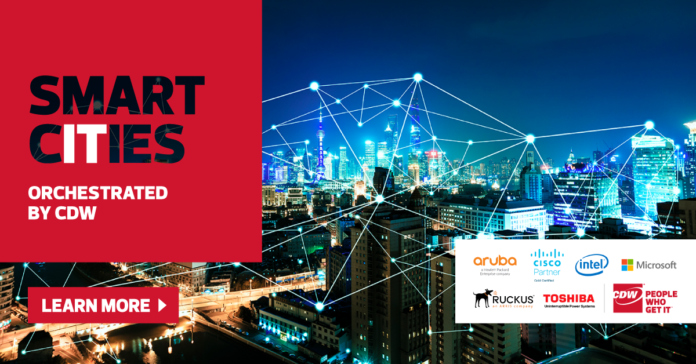How can cities make their existing infrastructure more cost-effective? What role do streetlights play in this?
When you go from HPS to LED lighting, you save about 50 percent. Dimming and trimming saves an additional 22 percent off of the original power. There are many times when the luminaire only needs to be at 50 percent brightness. Some hours of the night and in some areas it can be at only 20 percent. And, instead of just turning the lights on to 100 percent, they turn on gradually as the sun goes down. Each of these saves energy and improves the citizens’ satisfaction with the lighting.
The streetlight pole, and its associated right-of-way, are major assets to the city. There are ways to use this asset to generate revenue or offset cost. A good example is air quality. A lot of cities have real air quality problems, and this shows up in public health issues, such as childhood asthma, one of the top reasons for emergency room visits. It’s a life-threatening problem, but you can mitigate the causes. Air quality sensors allow a city to tell its residents when it’s not safe for children or the elderly to go outside.
Why are streetlights the ideal starting point for creating a smart city?
Streetlights are a part of the city fabric that’s very much consistent across all cities. Since the poles are consistently spaced and at consistent heights, they are an engineer’s dream for deploying sensors or services. In North America, there is one street light pole for approximately every 10 residents. This varies somewhat by population density, but it’s very consistent. That’s a pretty powerful platform for being able to deploy technology.
What are some of the key benefits of a smart lighting solution?
One of the big, unseen, benefits to deploying an CIMCON network lighting control system is that you end up with an IP network that spans the city. Virtually every light can be an on-ramp to the network. This allows the city to digitize services and deploy them anywhere there’s an opportunity to improve an outcome. Traffic efficiency, flooding, pedestrian safety, weather events – these are challenges that many cities face. Now, we can cost-effectively deploy solutions where previously it would be cost prohibitive.
How can a smart lighting solution help cities collect information and data?
A perfect place to put sensors is at the top of the pole. The sensors are largely out of harm’s way. Not surprisingly, the street lights have AC power. The poles are in the city, out in the open, ideal to capture temperature, humidity, windspeed, sound pollution, even gunshot monitoring.
To give a specific example, outdoor workers are not supposed to work if the heat index is too high. If they don’t have body-worn sensors, the city can monitor the conditions with sensors, and keep them safe on extreme days.
Are there any stories of customers you’ve helped that stood out?
In Opelika, Alabama, they’re tying streetlights in with video and audio monitoring to brighten lights if there is an alert to abnormal behavior. We have a university that’s using video sensor technology to monitor and manage closed parking areas at night, rather than sending a campus security cruiser every time. The lights can blink or brighten based on an edge event, the intent being to dissuade the vehicle from remaining in the lot.
How can smart technology be more widely deployed across a city?
Crosswalk safety is a big issue for many cities. Sensors can measure pedestrian density and adjust lighting output and signal timing dynamically. And, every city has streets, intersections, and areas that are more prone to accidents. Tuning the lighting, adjusting signal timing, adding real-time signage can help. Coupled with V2R communication, we can learn what works and deploy the solution at scale.

Carter Yepsen is CIMCON Lighting’s Sales Director – Cisco S&CC Platforms, responsible for guiding CIMCON’s sales and marketing efforts through the Cisco ecosystem.







